A full, thick, green lawn is the ideal vision you have for your yard.
A spotty or splotchy lawn that is discolored or inconsistent is not usually high on your must-haves for the perfect home landscape in Northern Virginia. We get it. No one wants the nastiest looking lawn on the block.
When you need to grow grass, good old grass seed is what usually does the trick.
But whether you need to spot seed or overseed some areas or need to redo your whole lawn, understanding the grass seed germination process can be tricky. You don’t want to waste time and money on expensive lawn seed only to find out you missed some steps in ensuring that seed resulted in actual grass.
As you figure out what kind of seeding option you need, you might be wondering how long for grass seed germination and how to speed up grass seed germination. These are certainly some essential factors in understanding the grass seed germination process.
Let’s review ideal grass seed germination timelines and discuss factors that can help and hurt that process to give you all the facts you need to create that thick grass stand you crave.
How to Maximize the Grass Seed Germination Process
Grass seed is a pretty conventional and quite simple way to grow grass.
Understanding the various aspects of the grass seed germination process can help you achieve better results because you can improve or tweak areas that maximize various parts of the system.
Here are some important aspects of the process that can help you learn more about how lawns grow.
Know Your Lawn Type
Understanding the grass seed germination process all starts with knowing your grass type.
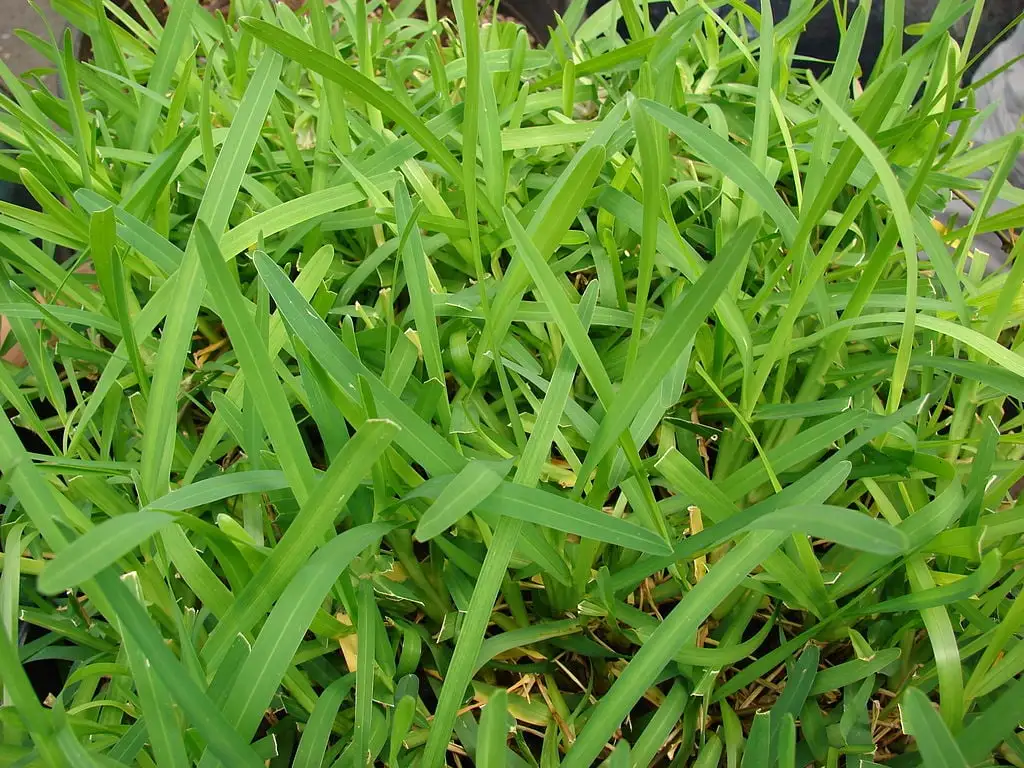
In Northern Virginia, turf-type tall fescue is the best grass type for home lawns. It has the deepest root system of the different cool-season grasses that grow here, which means it can pull water from deeper in the soil and resist drought and heat stress.
Turf-type tall fescue grows in clumps and spreads through vertical shoots or tillers from the base of each grass plant.
Identify the Reasons You Might Have Bare Spots
Grass seed doesn’t just grow because you throw it down.
If you have a lawn disease or you have a dog that likes to go to the bathroom in the same spots in your lawn, you might have bare spots in your grass as a result.
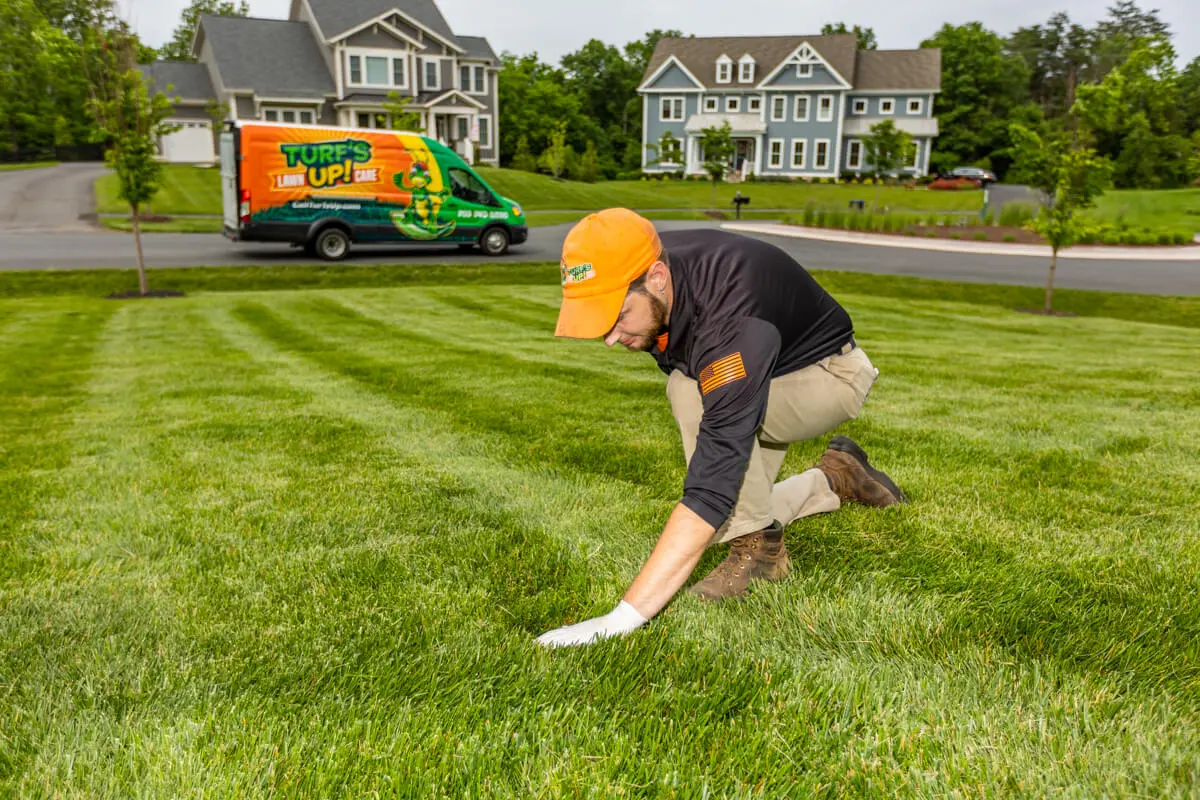
Pinpointing the causes of these spots and addressing the issues first can result in a better grass seed germination process. This is because if you toss seed down over an area with a bigger problem, you won’t fill the spot in and you won’t solve the problem either.
Aim For Prime Grass-Growing Conditions
When it comes to optimizing the grass seed germination process in Northern Virginia, you want to make sure you have the right conditions, including proper sunlight and airflow.
Most grasses need at least four hours of direct sunlight to grow and thrive.
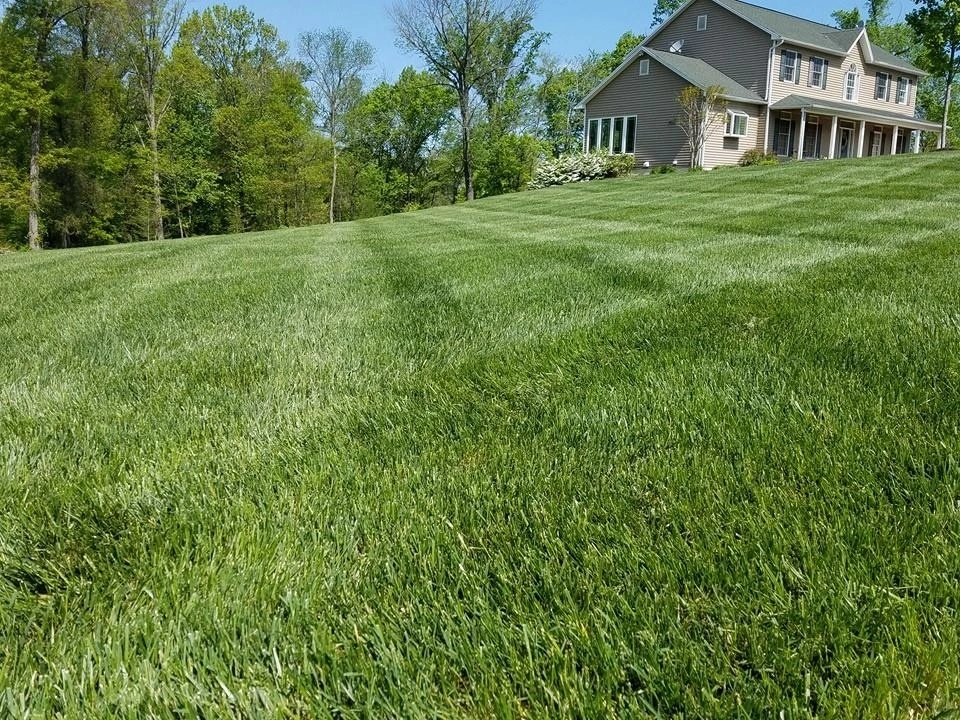
To achieve this in some of the shadier areas of your yard, trimming or thinning trees to let in more sunlight could be a good step to perform before seeding to ensure you can successfully get great grass seed germination.
Focus on the Best Time of Year for Planting Grass Seed
How to speed up grass seed germination involves knowing when the weather is cooperating most to maximize the amount of grass you get.
In Northern Virginia, fall is the best time to plant grass seed. Autumn reigns supreme over spring because it offers a mix of warm soil, cool air, rain, and just enough time for grass roots to develop before winter arrives. And since fewer weed seeds are present or moving through the air in fall, you get less weeds at this time as well. Bonus!
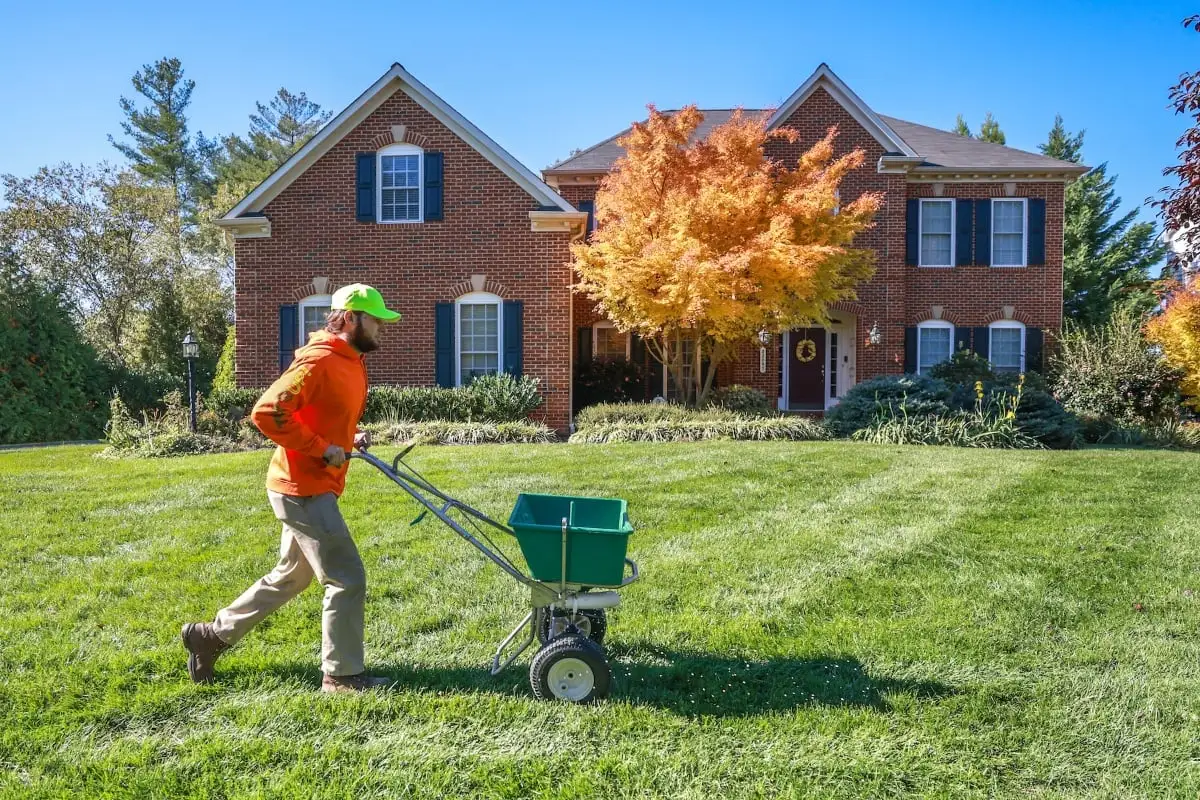
The trick with fall is avoiding planting seed too late in the year where frost or freezing temperatures will prevent its growth. Plant seed no later than late September/early to mid-October for best results.
Plant Grass Seed Properly
When you’re trying to learn about how to speed up grass seed germination, you have to plant seed correctly to ensure the process works.
Start by raking out any dead or matted turf. Then dig and loosen the top 2 to 3 inches of soil a bit to prepare it for the seed. Remove any debris like stones or sticks and break up any clumps of soil and level out areas to avoid excess water pools.
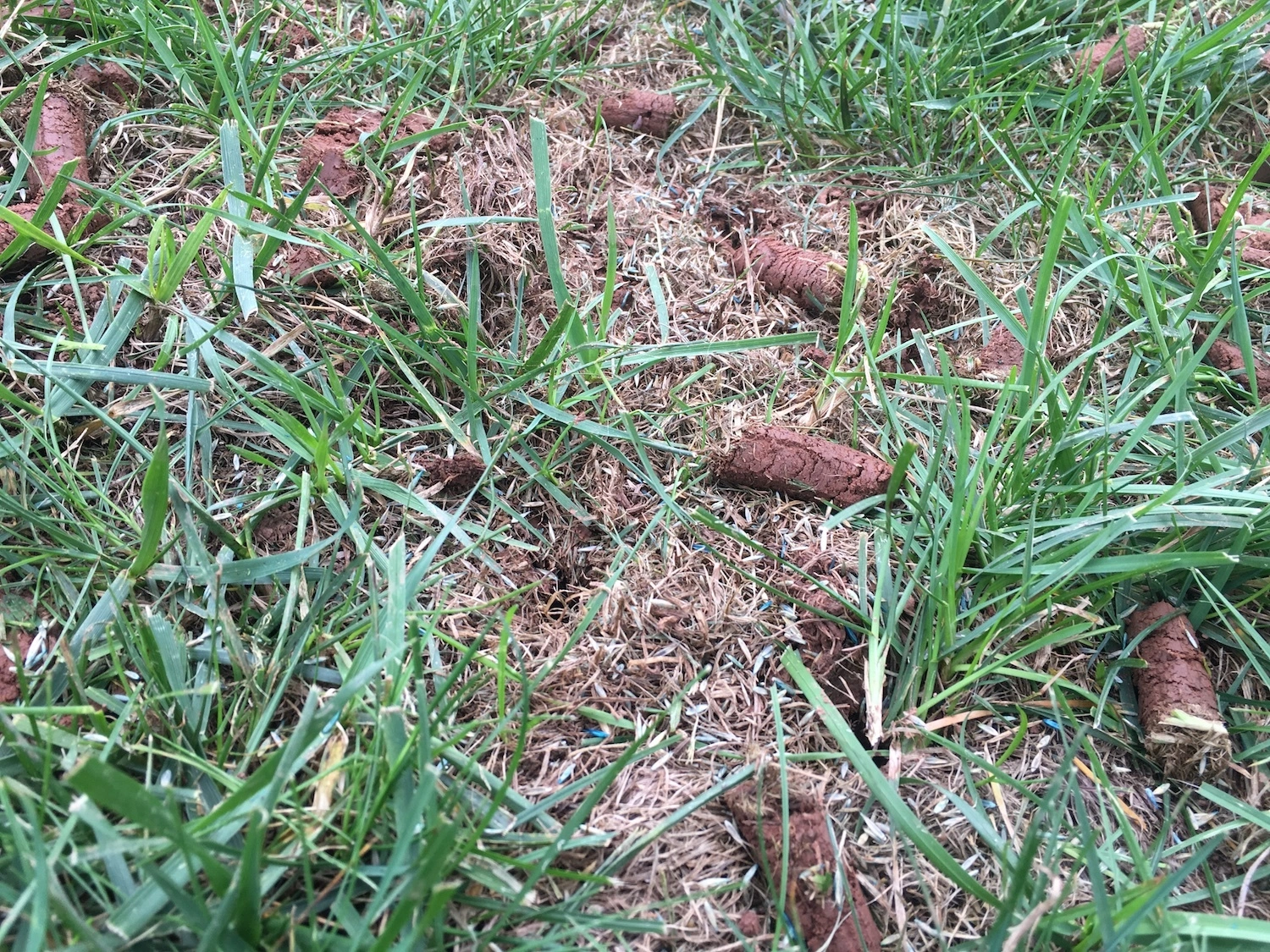
You want the seed to touch the soil. Next, scatter grass seed over the loosened soil and tamp it down.
Properly preparing the soil ensures that when the grass seeds are ready to be planted, they’ll make direct contact with the right nutrients, moisture, and conditions.
Ensure Maximum Seed-to-Soil Contact
Scattering grass seed like you’re throwing rice at a wedding isn’t necessarily the best solution for how to speed up grass seed germination.
The seed needs to be nestled in the soil so it can germinate.

Since lawn aeration is best done in the fall months, this is the ideal time to also overseed your lawn and fill in open areas.
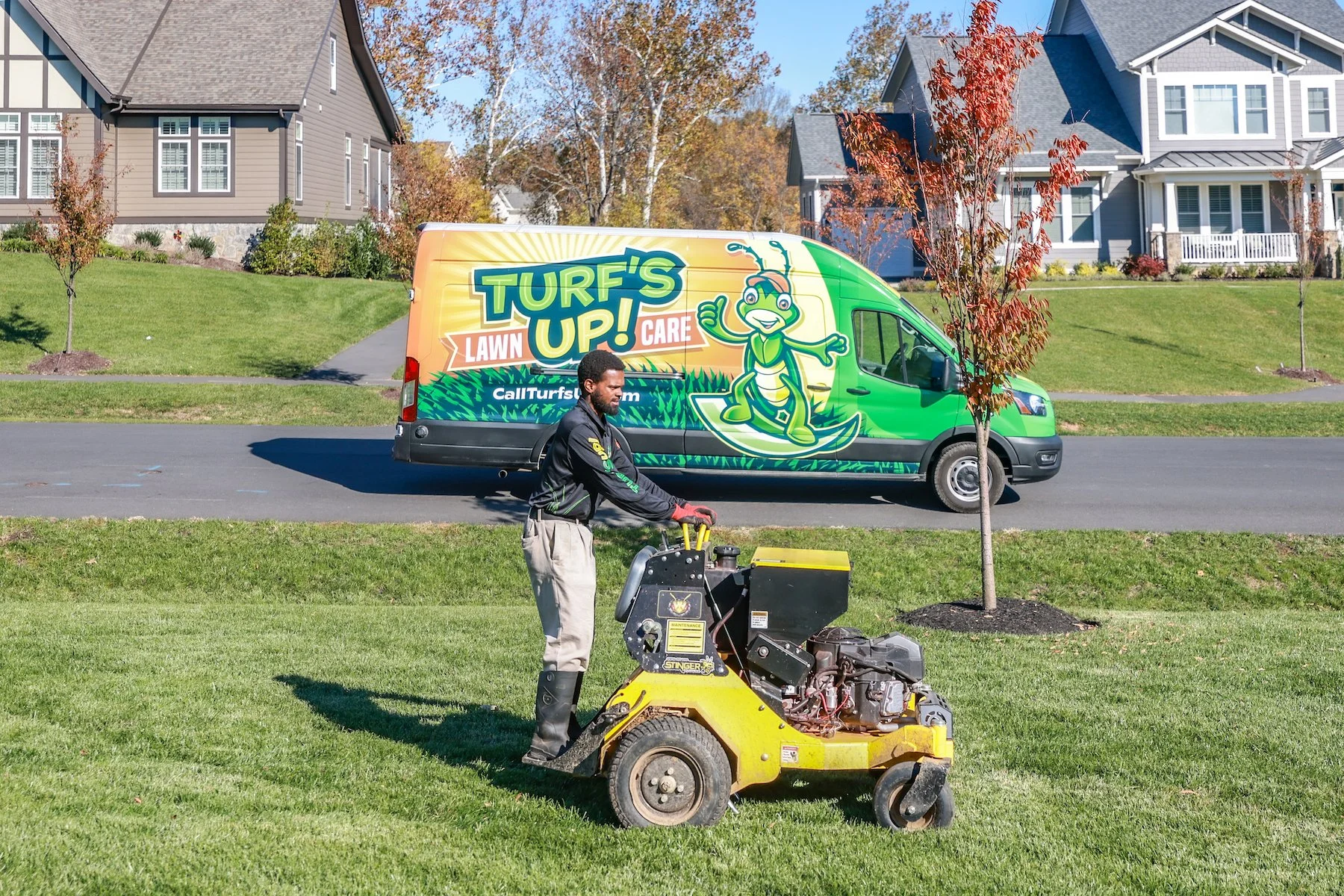
Lawn aeration is the practice of using a special machine called an aerator to pull soil plugs from your lawn and redeposit them. This process creates air pockets so grass roots can thrive and receive water and oxygen. Healthier roots make a thicker, healthier lawn. And a healthier lawn is more resistant to weeds, diseases, and drought and can fill in bare spots a whole lot easier.
And since aeration also helps relieve compacted soil, this helps support seed germination, too. Compacted soil doesn’t have enough oxygen to support the seed’s growth process.
Remember to Water New Seed Correctly
To optimize the grass seed germination process, it takes just the right form and level of moisture for the hard outer casing of the seed to absorb adequate moisture.
Once the seed absorbs the moisture, the seed’s coat ruptures, making way for the emerging root tip and marking the official start of germination.
To give your seed proper moisture, once your lawn care professional is done aerating and overseeding, you want to saturate your lawn as soon as possible to keep it evenly moist.
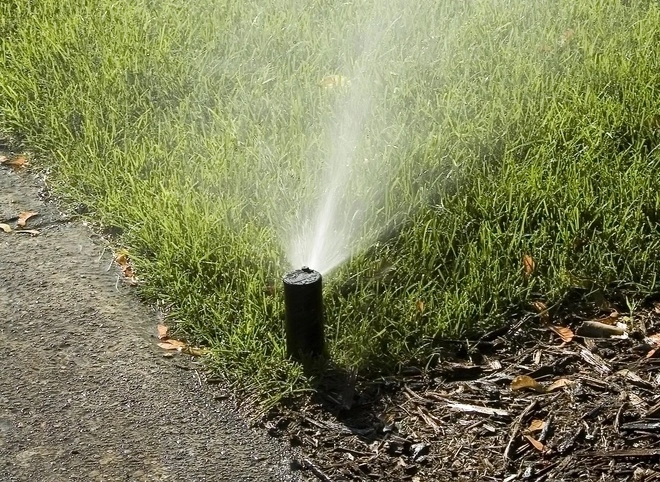
You might be wondering what “saturate” means? It depends on your soil type. If it’s heavy clay, it’ll take longer to saturate than sandier soil. Proper saturation amounts to about one hour per section to get the water down 1 to 2 inches into the soil. The goal is to keep the seed moist, but not submerged, at all times.
How often you should water is determined by weather. If seed is drying out during the day and Mother Nature isn’t providing any additional rainfall, you’ll need to water a second time each day to ensure consistent moisture until those seeds germinate, which can take about 10 to 14 days.
Once the seed germinates, you can reduce watering to once a day for 30 minutes in each section until the lawn is established in those bare spots. You don’t want to leave out this important step. Many people will water right away and until germination, but then they stop watering, thinking their job is done. You want to round out this watering schedule so those last seeds germinate and those tender new lawn shoots have a chance to grow strong.
If after aeration and overseeding, you water correctly, your germination rate on those seeds increases to 90 to 95 percent. That means you maximize nearly all the seed that was put down. You definitely don’t want to waste this valuable seed that can turn your lawn from bare and spotty to green, thick, and full.
Hire a Northern Virginia Lawn Care Pro
As you’re trying to understand and boost the grass seed germination process, you might find you want to ask for some help.
It can be pretty frustrating to try and correctly identify your lawn problems, especially when you see bare spots or your lawn looks spotty and troubled and you can’t figure out how to fix these issues and get your lawn looking good again.
We understand. Lawn care is more of a science. It takes proper timing and best practices to get results to turn out just right. And if you miss a step – whether it’s because you are focused on your own work or family needs – your lawn can suffer.
Hiring a lawn care professional to come in and assess your problems and provide solutions to address your lawn seeding can be just what you need to get your lawn back to its lush and vibrant self.
Get a Better Lawn With Better Grass Seed Germination
Repairing patches of dead grass, filling in bare spots, or even starting a whole new lawn is just the beginning of the lawn process.
You want that end result: Being able to sink your bare feet into a soft, thick stand of grass. We get it; we all want that.
Invest in a professional to make your grass seed germination process more worthwhile and add to that a complete, proactive lawn care program to keep your lawn strong and healthy, so it keeps delivering that curb appeal-boosting goodness.
Turf’s Up can help! We bring years of lawn care service experience and can help you solve your issues fast, so you can spend time enjoying your lawn instead of constantly thinking about how your lawn is a blemish on the neighborhood.
Ready to learn why Turf’s Up could be your totally awesome choice for lawn care services in Northern Virginia? We’re stoked to learn more about you and help you have the best lawn on the block. Get started today with a free quote. Together, we can prepare a customized plan that is perfect for you and your lawn. 

Image Source: grass type
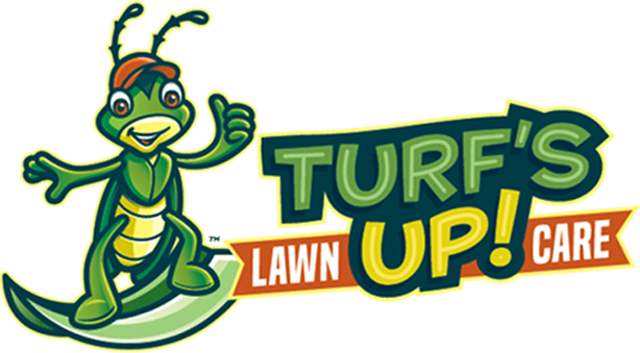
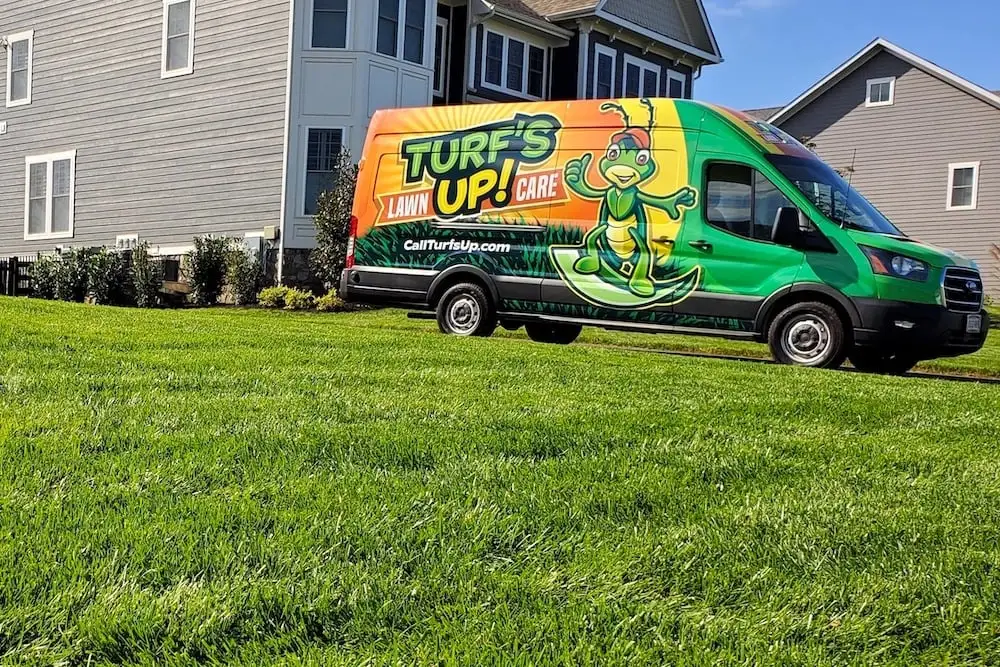


Comments (0)
Thanks for your comment!
Thanks for your feedback! Your comments have been successfully submitted! Please note, all comments require admin approval prior to display.
Error submitting comment!
There is a problem with your comment, please see below and try again.